Royal Enfield 650 Twins: Top Questions Answered

- The new 649 cc parallel-twin engine is torquey and refined
- Standard dual-channel ABS works great, and the gearbox is slick
- The Royal Enfield 650 Twins will be priced around Rs. 3-3.25 lakh
In a way, the Royal Enfield 650 Twins are the real modern classics in the true sense, and the most powerful motorcycles from Royal Enfield on sale. Both the Interceptor 650 and the Continental GT 650 share the same engine, chassis, 18-inch wheels and brakes, but each bike offers a different flavour in character and personality. Royal Enfield has really upped the game and the brand new 650 Twins are comparable to the best modern classics available on offer, although there is no liquid-cooling, ride-by-wire or fancy electronics. But there's standard dual-channel ABS and the lack of electronic wizardry means these bikes will be priced attractively. Here's a look at all the questions you may have about the Royal Enfield Twins and their answers.
Also Read: Royal Enfield Interceptor 650 & Continental GT 650 Launched In India

(The Royal Enfield Interceptor 650 shares the same 649 cc parallel-twin engine with the Continental GT 650)
What is the engine like?
The Royal Enfield 650 Twins are based on a brand-new 649 cc, air/oil cooled, parallel-twin engine which puts out 47 bhp of power at 7250 rpm and 52 Nm of peak torque at 5250 rpm. And 80 per cent of that torque is available from 2500 rpm. What this means is that the engine pulls from below 3000 revs with urgency, till about 6000 revs. And it's a free revving engine, and hits the rev limiter easily at over 7000 rpm, but the engine needs a little bit of time over 6000 rpm. It's easy to hit 130 kmph and the bike will happily cruise at those speeds all day long, and even 140 kmph is easily achieved. We were able to hit a top speed of around 110 mph (that is close to 180 kmph), so this is an engine with high speed capability, and riding the torque between 3000-5000 rpm is what feels best. The fuelling is spot on, so there's no lurch or jerkiness in the throttle response, even when you're on/off the throttle in high speed corners.

(The engine offers solid grunt in the mid-range, making for effortless cruising)
What is the exhaust note like?
The new 649 cc engine employs a 270-degree firing crank and although it's a parallel-twin format, the exhaust note is throaty and burbles with a bassy note which is quite likeable. The stock pipes are adequate enough and standing at stop lights you can hear the pipes burbling and rumbling with a very nice bassy note if you rev the engine. Royal Enfield is working on a pair of aftermarket accessory exhausts by S&S Cycle. The pipes are still under development and it's not clear if they will be introduced in India. Some of the bikes ridden by the Royal Enfield lead riders during our first ride were equipped with the accessory S&S pipes. But these are louder than the stock markets, and to us the stock pipes sound very good, and the 650 Twins may not need any aftermarket pipes.
undefined
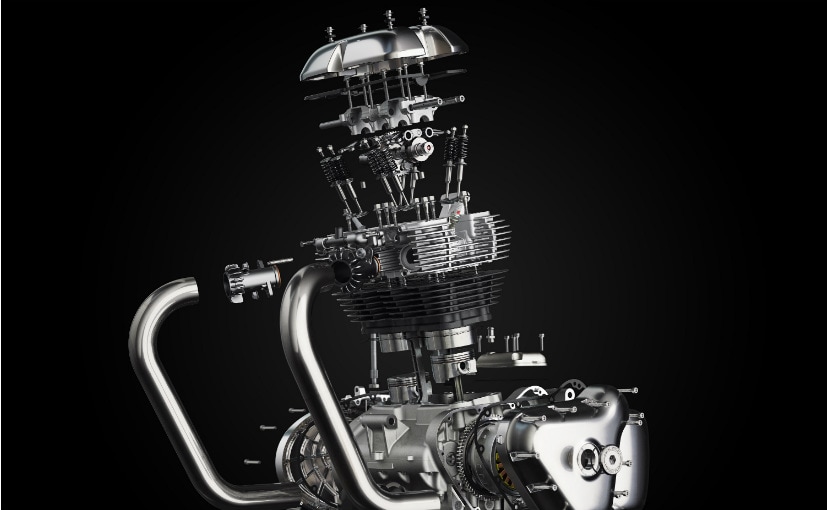
(The Royal Enfield 650 cc engine is counterbalanced and offers smooth performance)
Are there any vibrations?
The engine is counterbalanced to keep vibrations in check. And Royal Enfield's engine design team has done a stellar job at building the best engine ever on any Royal Enfield. For the most part, it's a smooth and refined engine comparable to any modern middleweight parallel-twin. As mentioned earlier, the engine performs best at between 3000 to 6000 rpm, and there's a slight tingly feeling on the handlebar and pegs around 6000 rpm. But it's nothing to worry about much and not at all bothersome. Upwards of 6000 rpm the engine can rev all the way to the redline, but it's best experienced at where the torque kicks in (between 3000-6000 rpm). On that note, 4000 rpm is good enough to hit 100 kmph in sixth gear, and 5000 rpm will have you over 125 kmph. Cruising at 130-140 kmph is relaxed, without any noticeable strain and the 650 Twin will hit nearly 180 kmph, but it's only the wind blast that gets in the way after a few minutes of sustained high speed riding.

(Both the Interceptor 650 and the Continental GT 650 have a slick-shifting 6-speed gearbox with slip-and-assist clutch)
What is the gearbox and clutch like?
The gearbox is a six-speed unit and is slick and precise. The gears slot into position with hardly any effort and in over two days of riding both the Interceptor 650 and the Continental GT 650, not once did we encounter any misses from the gearbox or any false neutrals. And of course, finding neutral is as easy at is can be with just a tap on the gear lever. The Royal Enfield 650 Twins employ a slip and assist clutch, so it doesn't give your left hand a workout when you're changing gears. The clutch could have been lighter, but it's light enough to not make you complain when you're battling traffic on Indian roads on your daily commute.
Also Read: Royal Enfield Interceptor 650 First Ride Review

(The Continental GT handles beautifully and is intuitive around a set of corners)
How do they handle?
For the most part, handling of the RE Twins is sublime and inspires confidence. Both the 650 Twins employ the same double cradle chassis which is designed by Royal Enfield-owned Harris Performance. Paul Young, test rider and a key member of Royal Enfield's chassis development team says there was a lot of work, thought and rigorous testing done on the chassis over several iterations and tests, both on real roads in England and India, and many months of testing at the Bruntingthorpe Proving Ground in Leicestershire, UK when the chassis was being developed. The RE Interceptor 650 offers a well-behaved ride and handling package. Our test ride route involved a fair bit of twisty roads and there is no reason for us to complain about its handling. There's good clearance, so no pegs were harmed or scraped, even during the occasional brisk rides in the mountains and the bike remains well planted. The Continental GT 650 offers even more intuitive handling, thanks to the sporty riding position and the rearset footpegs. The rider sits slightly low and crouched on the GT 650 and with the body weight set slightly forward, it makes quite some difference in the bike's dynamics. Just a nudge on the clip on handlebar on the twisties is good enough for the GT 650 to tackle a set of left right corners at high speed.
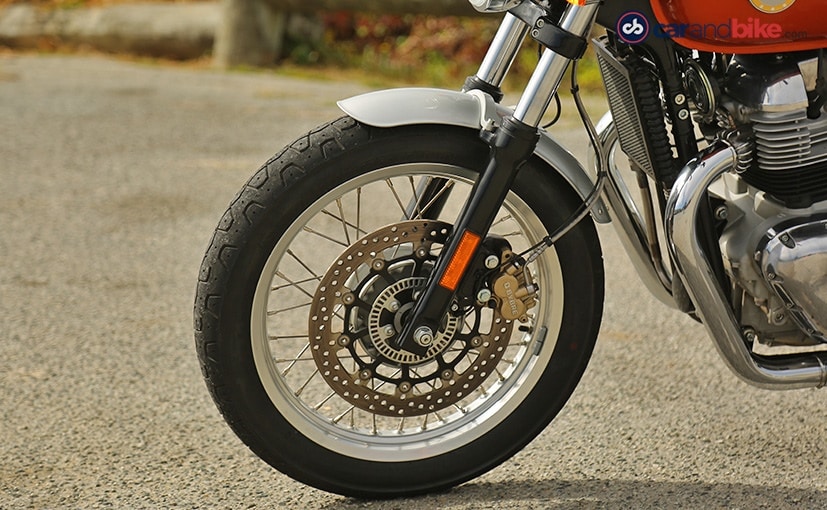
(The Interceptor 650 gets a 320 mm disc up front; ABS is a dual-channel unit and standard)
Also Read: Royal Enfield Continental GT 650 First Ride Review
How are the brakes?
The RE 650 Twins come with standard dual-channel ABS developed by Bosch. The braking set-up consists of a 320 mm front disc and a 240 mm rear disc by ByBre. The ABS works quite well, and even under hard braking, you can feel the ABS kicking in only under emergency braking (as we found out during the first ride of the Continental GT 650). It's intuitive, works pretty well, and should keep you safe, just in case of any emergency braking manoeuvres.

(Ride quality is slightly stiff, to complement the handling)
What is the ride quality like?
The ride quality of both the 650 Twins is on the stiffer side. The suspension of the Interceptor 650 we were riding was adjusted to be on the softer side, and the roads and surfaces we were riding were more or less a smooth affair. A little broken and gnarly asphalt that we subjected the bike to, revealed that ride quality is slightly on the stiffer side, no doubt to complement the handling. The Continental GT 650 we were riding had the preload adjusted to the stiffest, no doubt to aid in handling. It felt stiffer but also handles slightly better and is more intuitive and sporty around corners. We will reserve our comments for how the ride quality is on Indian roads until we ride them here.

(Different variants will have different decals and colour options; the mechanicals remain the same)
How many variants?
Both the Royal Enfield Interceptor 650 and the Royal Enfield Continental GT 650 will be available in three variants - Standard, Custom and Chrome. All three variants have the same mechanicals and the only difference is cosmetic - different colour schemes and different badges. The RE 650 Twins are introduced as one common platform, so in India too, we will get the same three variants, each with the same engine, chassis and cycle parts. There are no riding modes, and no traction control on offer, obviously to keep pricing competitive. But the standard ABS works well.

(Each variant shares the same platform and the changes are only cosmetic)
What accessories are available?
Royal Enfield has also introduced a range of OEM accessories, including a choice of different flyscreens, bar-end mirrors, engine guards and even soft luggage. Also available is a completely new range of apparel and riding gear, which include some nice riding jackets.

(The RE 650 Twins are also available with several OEM accessories)
How much will they cost?
Royal Enfield has already announced prices in the US, and going by the US prices, the bikes will be priced competitively in India. We expect the Royal Enfield Interceptor 650 to be priced around Rs. 3 lakh, or maybe even slightly lower than that, while the Continental GT 650 may be priced at around Rs. 3.25 lakh. According to Siddhartha Lal, the 650 Twins will be positioned as an easy and accessible upgrade for existing owners of the Royal Enfield Classic 350 and Classic 500, so expect very competitive pricing. The bikes are expected to be launched sometime in November, with deliveries expected to begin by December.
Also Read: Royal Enfield 650 Twins Price Expectation

(Prices are expected to be around Rs. 3 lakh in India)
How is the build quality and reliability?
Build quality for the most part is quite good, and the Royal Enfield 650 Twins feel well-built and robust. Although powered by a 650 cc twin engine, and with kerb weight (without fuel) of 198 kg for the Continental GT and 202 kg for the Interceptor 650, both bikes feel compact and will be easy to ride and handle, both for new riders and for riders who want to get back to motorcycling after a hiatus. Reliability can be gauged only after the bikes are launched and we spend some time with them here in India. But Royal Enfield is offering a 3-year, unlimited mileage warranty in the US, and for India too, there will be a 3-year, 40,000 km warranty offered. That speaks a lot about Royal Enfield's confidence in the products.
Trending News
 1 min readTriumph Tracker 400: In Pictures
1 min readTriumph Tracker 400: In Pictures 1 min readTriumph Tracker 400 Unveiled in UK
1 min readTriumph Tracker 400 Unveiled in UK
Latest News
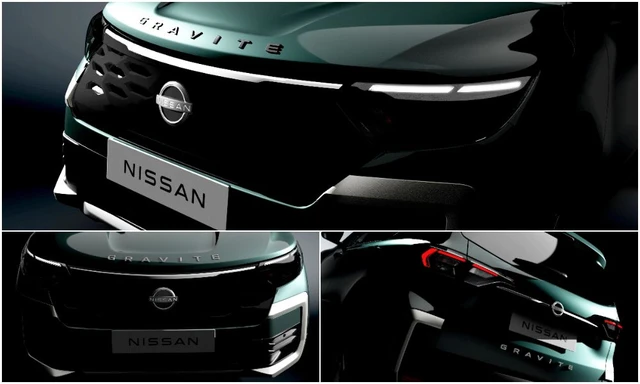 Amaan Ahmed | Dec 18, 2025Nissan Gravite MPV (Renault Triber Derivative) To Be Launched Early In 2026Nearly seven years on from the launch of the MPV it shares its underpinnings with arrives Nissan's entry-level 7-seat model; to debut in January.2 mins read
Amaan Ahmed | Dec 18, 2025Nissan Gravite MPV (Renault Triber Derivative) To Be Launched Early In 2026Nearly seven years on from the launch of the MPV it shares its underpinnings with arrives Nissan's entry-level 7-seat model; to debut in January.2 mins read Jafar Rizvi | Dec 18, 2025Tata Sierra Pure, Pure+ Variants Explained In PicturesThe Pure trim of the Sierra is priced from Rs 12.49 lakh to Rs 17.49 lakh (ex-showroom), depending on the powertrain option. Here is a breakdown of what it gets.3 mins read
Jafar Rizvi | Dec 18, 2025Tata Sierra Pure, Pure+ Variants Explained In PicturesThe Pure trim of the Sierra is priced from Rs 12.49 lakh to Rs 17.49 lakh (ex-showroom), depending on the powertrain option. Here is a breakdown of what it gets.3 mins read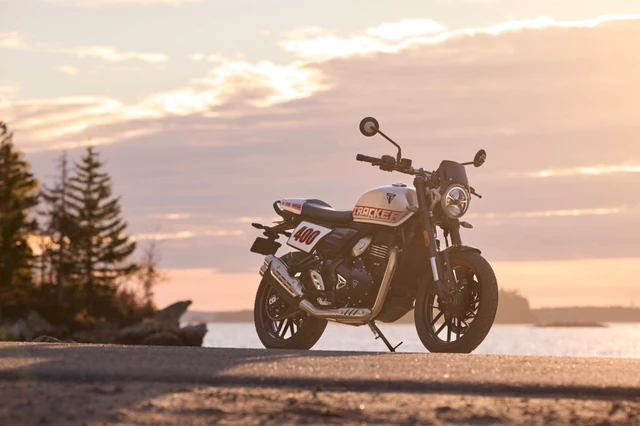 Janak Sorap | Dec 17, 2025Triumph Tracker 400: In PicturesTriumph has unveiled the new Tracker 400 based on the Speed 400. Here’s a quick look at the motorcycle in pictures.1 min read
Janak Sorap | Dec 17, 2025Triumph Tracker 400: In PicturesTriumph has unveiled the new Tracker 400 based on the Speed 400. Here’s a quick look at the motorcycle in pictures.1 min read Jaiveer Mehra | Dec 17, 2025Tata Sierra Smart Plus Revealed In Official Pictures: What Do You Get For Rs 11.49 Lakh?While nearly everyone has seen the Sierra in pictures and many in person at dealerships, you’ll likely only have seen the top models. But what is the base variant like?2 mins read
Jaiveer Mehra | Dec 17, 2025Tata Sierra Smart Plus Revealed In Official Pictures: What Do You Get For Rs 11.49 Lakh?While nearly everyone has seen the Sierra in pictures and many in person at dealerships, you’ll likely only have seen the top models. But what is the base variant like?2 mins read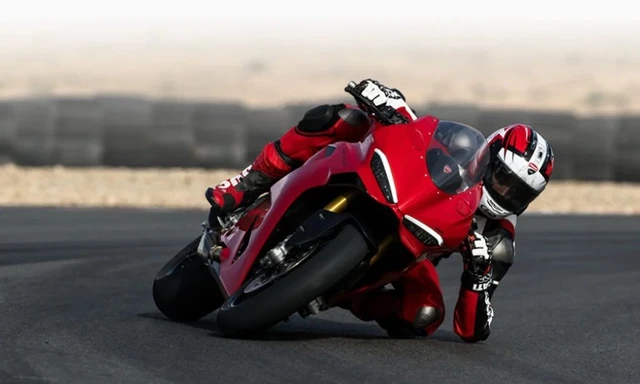 car&bike Team | Dec 17, 20252025 Ducati Panigale V2, Streetfighter V2 Recalled In The USThe recall states that two ABS fuses may have been inadvertently fitted in the wrong positions during wiring assembly and could increase the risk of a crash.3 mins read
car&bike Team | Dec 17, 20252025 Ducati Panigale V2, Streetfighter V2 Recalled In The USThe recall states that two ABS fuses may have been inadvertently fitted in the wrong positions during wiring assembly and could increase the risk of a crash.3 mins read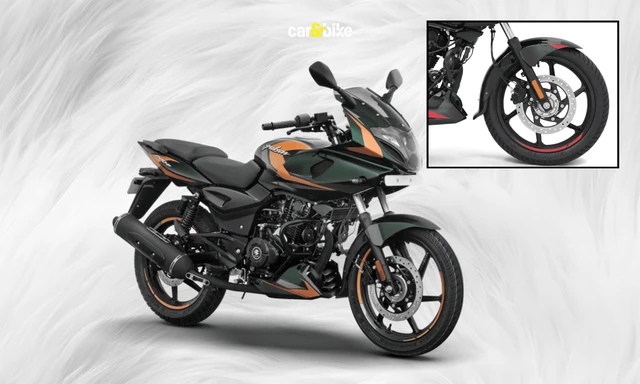 Jafar Rizvi | Dec 17, 2025Updated Bajaj Pulsar 220F Does Not Get Dual-Channel ABS; Company Issues ClarificationBajaj Auto has confirmed that the updated Pulsar 220F does not feature dual-channel ABS, contradicting earlier reports.1 min read
Jafar Rizvi | Dec 17, 2025Updated Bajaj Pulsar 220F Does Not Get Dual-Channel ABS; Company Issues ClarificationBajaj Auto has confirmed that the updated Pulsar 220F does not feature dual-channel ABS, contradicting earlier reports.1 min read
 Janak Sorap | Dec 11, 2025Harley-Davidson X440 T First Ride Review: Smarter and SharperHarley-Davidson has taken the X440 and given it a more focused and engaging twist. The result is the X440 T—essentially the same platform but updated in areas that give the motorcycle more appeal and riders more thrill.5 mins read
Janak Sorap | Dec 11, 2025Harley-Davidson X440 T First Ride Review: Smarter and SharperHarley-Davidson has taken the X440 and given it a more focused and engaging twist. The result is the X440 T—essentially the same platform but updated in areas that give the motorcycle more appeal and riders more thrill.5 mins read Shams Raza Naqvi | Dec 10, 20252025 Mini Cooper Convertible Review: More Colour On Indian RoadsThe updated Mini Cooper Convertible is set to be launched in the Indian market in the next few days. We drive it around Jaisalmer for a quick review.1 min read
Shams Raza Naqvi | Dec 10, 20252025 Mini Cooper Convertible Review: More Colour On Indian RoadsThe updated Mini Cooper Convertible is set to be launched in the Indian market in the next few days. We drive it around Jaisalmer for a quick review.1 min read Bilal Firfiray | Dec 8, 2025Tata Sierra Review: India’s New Favourite?Marking its return after a few decades, the reborn Sierra has made everyone sit up and take notice. But is it worth the hype?10 mins read
Bilal Firfiray | Dec 8, 2025Tata Sierra Review: India’s New Favourite?Marking its return after a few decades, the reborn Sierra has made everyone sit up and take notice. But is it worth the hype?10 mins read Girish Karkera | Dec 4, 20252026 Honda Prelude First Drive: Domesticated Civic Type RA sporty-looking coupe built to give customers a taste of performance but not at the expense of everyday practicality.5 mins read
Girish Karkera | Dec 4, 20252026 Honda Prelude First Drive: Domesticated Civic Type RA sporty-looking coupe built to give customers a taste of performance but not at the expense of everyday practicality.5 mins read Seshan Vijayraghvan | Nov 29, 2025Mahindra XEV 9S First Drive Review: Big Electric SUV, Bigger ExpectationsThe XEV 9S lands at a time when the EV crowd is growing fast. It’s a big, born-electric, three-row SUV that starts under 20 lakh. It sits close to the XUV700 in size, but the brief is very different. Here’s what it’s like on the road.11 mins read
Seshan Vijayraghvan | Nov 29, 2025Mahindra XEV 9S First Drive Review: Big Electric SUV, Bigger ExpectationsThe XEV 9S lands at a time when the EV crowd is growing fast. It’s a big, born-electric, three-row SUV that starts under 20 lakh. It sits close to the XUV700 in size, but the brief is very different. Here’s what it’s like on the road.11 mins read













































































































































